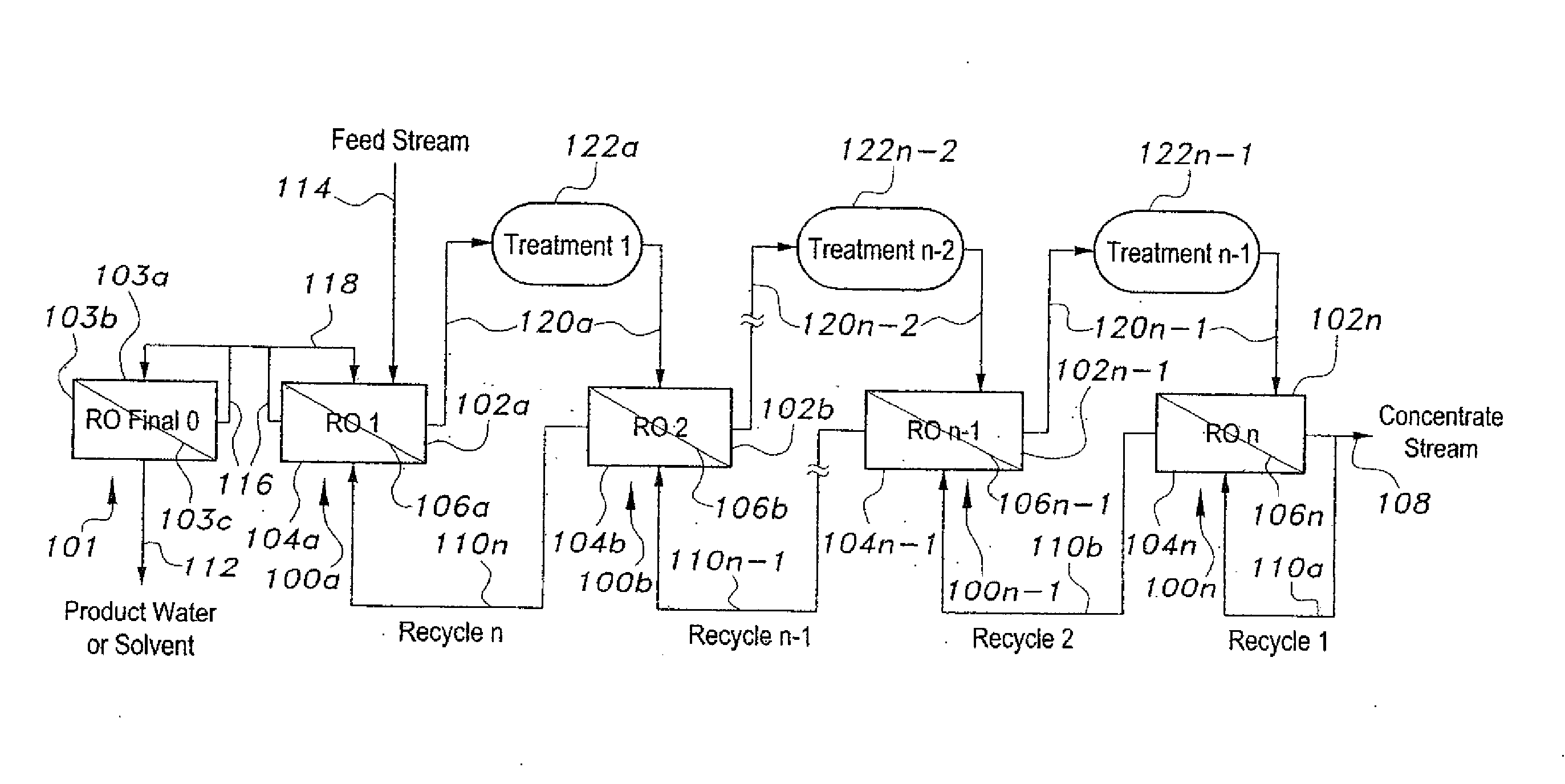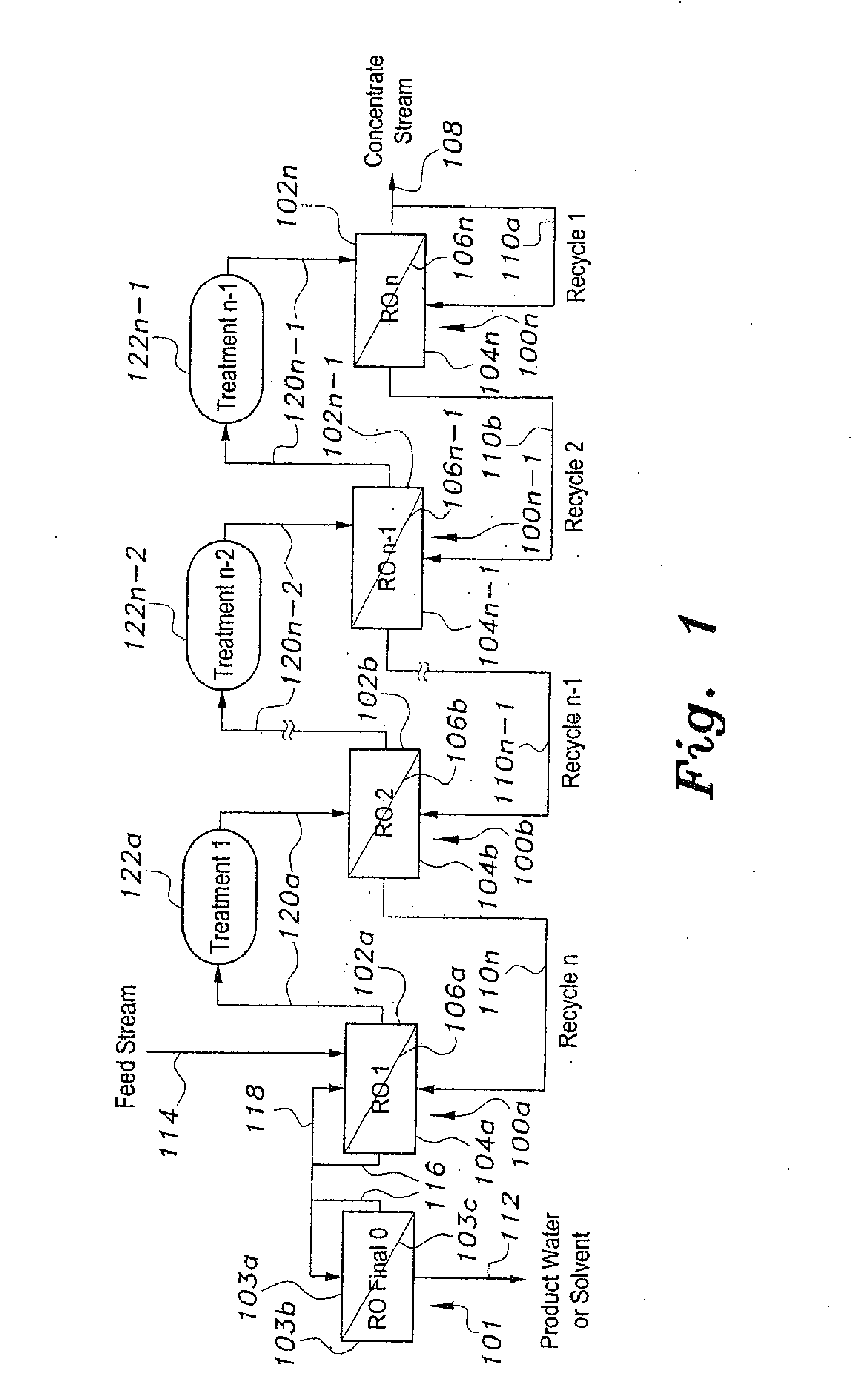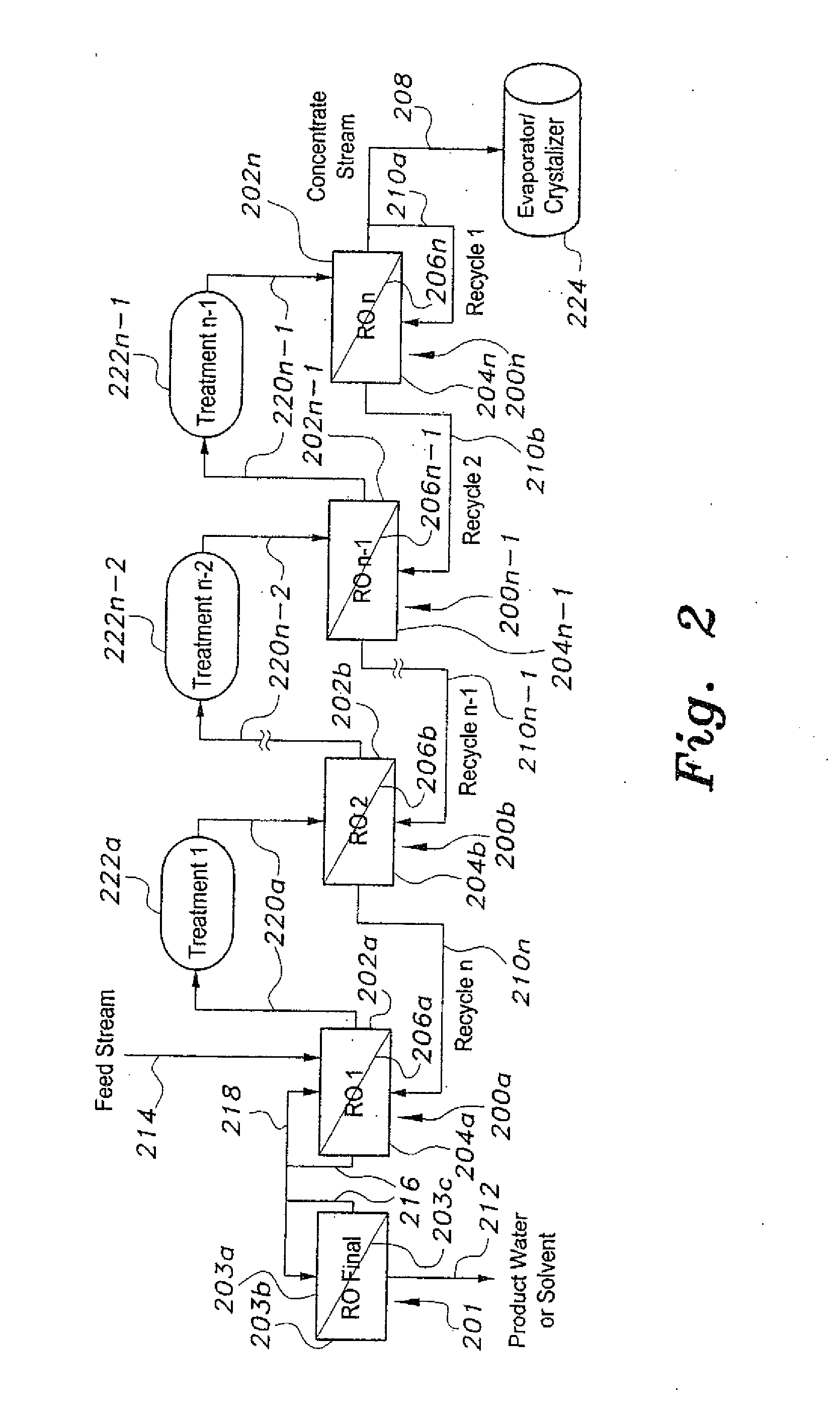Method of solvent recovery from a dilute solution
a solvent recovery and dilute solution technology, applied in the field of liquid processing systems and methods, can solve the problems of low recovery ratio, large amount of effluents that have a negative impact on the environment, and conventional reverse osmosis (ro) processes suffer from certain challenges, and achieve high rejection membranes and reduce the pressure gradient across the membrane.
- Summary
- Abstract
- Description
- Claims
- Application Information
AI Technical Summary
Benefits of technology
Problems solved by technology
Method used
Image
Examples
third embodiment
[0036]FIG. 3 further includes a metals and solids recovery device 334 that receives and processes concentrate from the concentrate side 328 of the nanofiltration device 326 via an interconnecting line 320a, with a water and / or solvent recovery device 336 receiving and processing liquid output from the metals and solids recovery device 334 via an interconnecting line 320b. Processed water or solvent is delivered from the system by a line 320c from the water and / or solvent recovery device 336, and by a line 320d from the evaporator / crystallizer device 324. Processed solids and / or concentrate are removed from the system by output 308a from the metals and solids recovery device 334, and by output 308 b from the evaporator / crystallizer device 324. The two outputs 308a, 308b may extend to a single output destination, similarly to the two lines 320c and 320d that extend to a single product water or solvent collection point.
[0037]FIG. 4 of the drawings provides a schematic illustration of a...
sixth embodiment
[0044]FIG. 6 of the drawings provides a schematic illustration of the method of solvent recovery. The embodiment of FIG. 6 differs from previous embodiments described further above and illustrated in FIGS. 1 through 5 primarily in that the stages 600a through 600n of the embodiment of FIG. 6 are forward osmosis devices, rather than reverse osmosis units. Each of the forward osmosis stages 600a through 600n includes a concentrate side, respectively 602a through 602n, a permeate side, respectively 604a through 604n, and a forward osmosis (FO) membrane, respectively 606a through 606n, separating the concentrate and permeate sides of each forward osmosis unit.
[0045]FO systems differ from RO systems in that in the case of forward osmosis, very little differential pressure is required to drive the solute across the membrane, e.g., 606a for the first unit 600a, from its concentrate side 602a to its permeate side 604a. Rather, the transfer of solute across the membrane is dependent upon nat...
first embodiment
[0047]Rather than passing a portion of the concentrate stream from the concentrate side of the final osmosis stage back to the permeate side of that stage, as in FIG. 1, the concentrate stream 608 of the forward osmosis embodiment of FIG. 6 is not remixed with any of the liquid concentrate or permeate of the system after being discharged from the concentrate side 602n of the final forward osmosis stage 600n. The forward osmosis system embodiment of FIG. 6 uses a draw solution of higher concentrate than the concentrate resulting in the concentrate side 602n of the final forward osmosis stage 600n. This draw solution enters the system through a first draw solution line 610a to the permeate side 604n of the final forward osmosis stage 600n. The draw solution is diluted by osmotic flow through the membrane 606n to the permeate side 604n of the final stage 600n. The diluted draw and permeate solution then flows from the permeate side 604n of the final stage 600n, to the permeate side 604...
PUM
| Property | Measurement | Unit |
|---|---|---|
| solvent | aaaaa | aaaaa |
| concentration | aaaaa | aaaaa |
| pressure | aaaaa | aaaaa |
Abstract
Description
Claims
Application Information
 Login to View More
Login to View More - R&D
- Intellectual Property
- Life Sciences
- Materials
- Tech Scout
- Unparalleled Data Quality
- Higher Quality Content
- 60% Fewer Hallucinations
Browse by: Latest US Patents, China's latest patents, Technical Efficacy Thesaurus, Application Domain, Technology Topic, Popular Technical Reports.
© 2025 PatSnap. All rights reserved.Legal|Privacy policy|Modern Slavery Act Transparency Statement|Sitemap|About US| Contact US: help@patsnap.com



